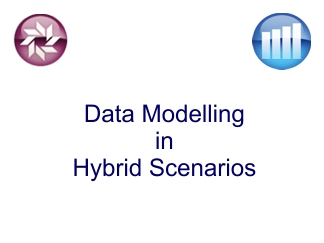Your SAP BusinessObjects Data Modelling Logic Is a Substantial Asset
The value of your SAP BusinessObjects data modelling cannot be over-estimated. It represents years of striving toward better and better BI through detailed discovery, innovation, peer reviews, and corporate approvals..
Effective modelling shields the end user from the complexities of data access, enabling better self-service BI, greater self-reliance for end users, and preventing misuse such as runaway queries, invalid data use, and forbidden data use.
Leveraging the existing, tested, and trusted modeling of your BI system using APOS Semantic Layer Migration (UMMA) creates value by simplifying the creation of data modelling logic in SAP HANA, SAP Analytics Cloud, and other solutions, both Cloud-based and On-Premise, and reducing the business and IT processes (design documentation, approvals, etc.) necessary to create effective data modelling logic.
Explore the value of your SAP BusinessObjects data modelling logic:

View the entire webinar on demand...
Where the Value Lies - Universes

Your BusinessObjects data modelling logic can be divided into Analytics Modelling and Report Development. The Analytics Modelling present in your Universes is key. Your Universes are built to:
- Define what data fields are exposed
- Define Measures and Dimensions
- Manage table links and joins
- Set meaningful field names
- Define and secure who can access specific data
Looking at your SAP BusinessObjects environment, we can see that a substantial amount of your business logic is encapsulated in your Web Intelligence reports. These reports answer the questions that your organization needs ask to operate at peak performance. They present the information from your data sources that your business sees as important, and even crucial to Finance, Operations, Sales and Marketing.
Report Development puts Web Intelligence Reports in place to:
- Define the business questions
- Define the data to address the business questions
- Define the structure for presenting the data
- Generate SQL Statements to support the reports
Where the Value Lies - Web Intelligence Reports

Where the Value Lies - Knowledge

Your SAP BusinessObjects data modelling logic is more than the sum of your Universes and Web Intelligence report objects. There is a gap between those assets that is filled by another asset, the accumulated knowledge of your team of analysts, DBAs, IT and BI personnel.
The gap between your Analytics Modelling and Report Development is bridged by various kinds of knowledge, including:
- Knowledge of business questions
- Knowledge of data systems
- Knowledge of data structures
- Knowledge of data technologies
- Knowledge of BusinessObjects technologies
All of these kinds of knowledge are possessed by individuals within your organization, but they may not be conveniently assembled into a single body of data modelling information, which you could use to rebuild your data modelling on a new platform. Instead, that knowledge is most commonly embodied in collaborative development processes that may have taken place over many projects and many years. The due diligence that goes into constructing this knowledge includes:
- Requirements gathering
- Development processes
- Testing/QA processes
- Reviews/Approvals
- Update cycles
Over time, these processes produce high quality Universe and Web Intelligence assets that provide highly trusted information. The time and cost of these Universes may be invisible to those who benefit from them, but that time and cost is substantial, particularly when you are faced with reproducing these assets on a different platform.
Leverage Your Universes, Web Intelligence & Knowledge
The information accessed via your Universes and presented by your Web Intelligence reports starts as raw data. It is the accumulation of data records which store potential information to help manage your business, but it is not user-friendly. That is, it is not structured to be usable. Data modelling simplifies the complex data and transforms it into analytics-ready structures.
Your BusinessObjects data modelling logic includes the mechanisms and processes to prepare targeted data and information that the business has deemed important to manage company operations. These assets are bound together by a third asset: your collective and accumulated knowledge of the requirements and processes used to build your BI system.
Using APOS Semantic Layer Migration (UMMA) to translate the existing, tested, and trusted data modeling logic of your SAP BusinessObjects platform into data modelling logic on another platform leverages the value you've created over time as encapsulated in your Universes, Web Intelligence reports, and collective knowledge.
APOS Semantic Layer Migration (UMMA) can use both your Universes and your Web Intelligence report objects to extract your SAP BusinessObjects data modelling logic for use on other platforms. You simplify the creation of modelling in SAP HANA, or SAP Analytics Cloud, or other Analytics applications, reducing the business and IT processes and cost (design documentation, approvals, etc.) necessary to create effective modelling.